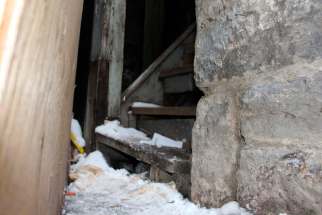Traces of hope under the ‘hood Rampant drug use and deadly gang violence have turned parts of Winnipeg's impoverished Centennial area into a war zone where volunteers, social agencies, churches and a brave grocer are putting up a fight
Read this article for free:
or
Already have an account? Log in here »
To continue reading, please subscribe:
Monthly Digital Subscription
$0 for the first 4 weeks*
- Enjoy unlimited reading on winnipegfreepress.com
- Read the E-Edition, our digital replica newspaper
- Access News Break, our award-winning app
- Play interactive puzzles
*No charge for 4 weeks then price increases to the regular rate of $19.00 plus GST every four weeks. Offer available to new and qualified returning subscribers only. Cancel any time.
Monthly Digital Subscription
$4.75/week*
- Enjoy unlimited reading on winnipegfreepress.com
- Read the E-Edition, our digital replica newspaper
- Access News Break, our award-winning app
- Play interactive puzzles
*Billed as $19 plus GST every four weeks. Cancel any time.
To continue reading, please subscribe:
Add Free Press access to your Brandon Sun subscription for only an additional
$1 for the first 4 weeks*
*Your next subscription payment will increase by $1.00 and you will be charged $16.99 plus GST for four weeks. After four weeks, your payment will increase to $23.99 plus GST every four weeks.
Read unlimited articles for free today:
or
Already have an account? Log in here »
Hey there, time traveller!
This article was published 06/12/2019 (2197 days ago), so information in it may no longer be current.
The old apartment complex stands near the corner of William Avenue and Isabel Street, its windows and doors boarded up. Graffiti scrawled by frenzied hands stains the red-brick façade. The grounds are littered with garbage. Used syringes scatter the property, inside and out.
The air is cold with hints of the depths of winter to come. The sun burns bright in the sky.
At the east side of the building, plywood has been pulled back from the fire escape. The opening is slight and rusted nails jut out from the dislodged board. This is the entrance intruders use. Up a single flight of steps — the third stair is caved in — there’s a doorway.
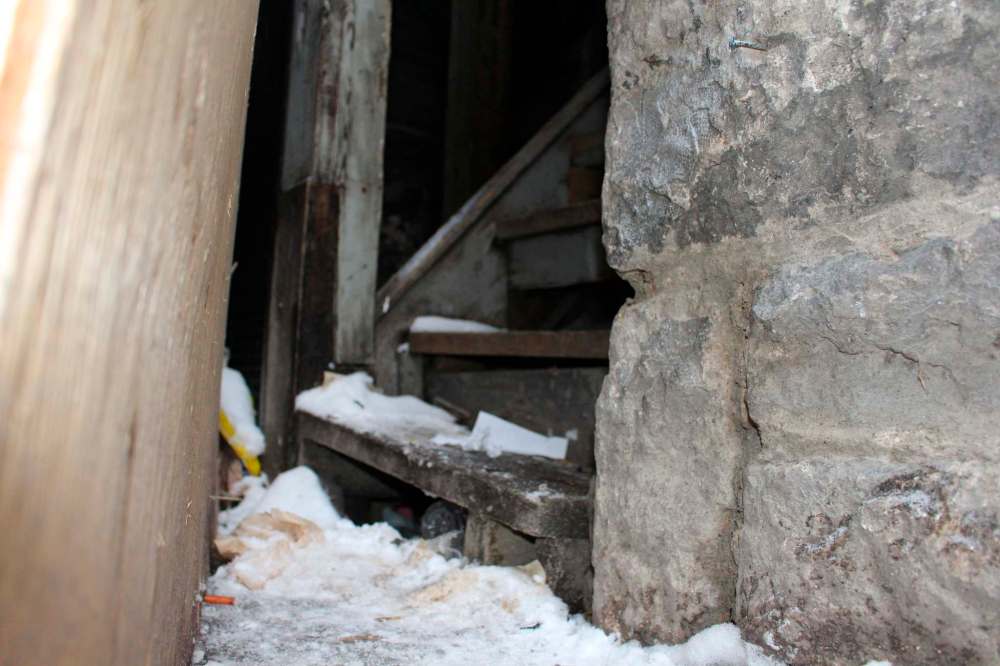
You step into darkness.
The air is musty and thick. The place has been ransacked and raided, reduced to rubble. In the kitchen, the cupboard doors have been torn from their hinges. An electrical utility panel hangs exposed on the wall.
The refrigerator is flipped on its side, serving as a makeshift table in the centre of the room, the white plastic exterior caked with dirt.
On top sit two syringes, next to burned matches and a half-used cigarette filter. It’s evidence of the intruders’ purpose: cooking down drugs in spoons and sopping the liquid with the filter; sucking the poison up into the needle before dispatching it into their veins.
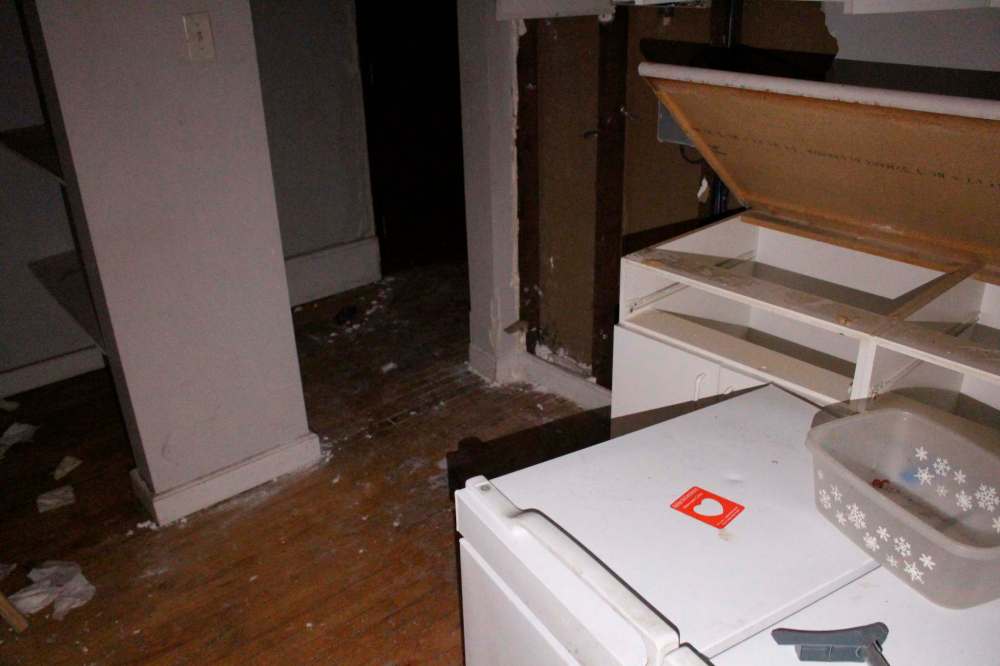
The drug of choice these days — for this neighbourhood and the city — is methamphetamine, favoured due to its low cost and long-lasting effects. One hit, purchased on Winnipeg’s streets for $10, can get someone high for up to 12 hours.
This is one of the cheapest places to buy meth in Canada. The drug has this city — and the addicts who have fallen under its sway — in a stranglehold. The proof is there in the exposed syringe tips waiting to poke those who trespass here.
There’s used tissue piled in the corner of the room, next to an empty prescription pill bottle. The bathroom is down the hallway, where the sink has been shattered into dozens of pieces, the jagged ceramic remnants strewn about the dusty floor.
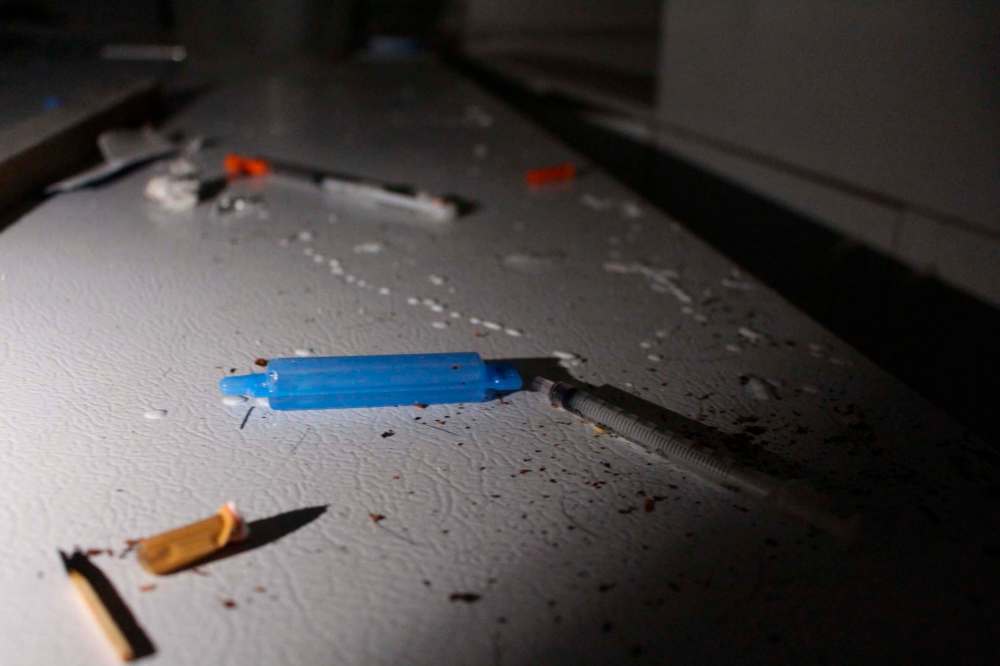
The living room is sparse, not nearly as pillaged and plundered as the kitchen and bathroom. But someone has dragged the stove here and shattered glass sits on top of the burners. There is a doorway leading to a bedroom at the back of the unit.
The side door leads to the rest of the apartment complex, 22 units in total, all of them cast in darkness.
Area residents say the building fell into disrepair over the past handful of years, citing a gang takeover that turned the place into a drug den. Eventually, squatters moved in, needles turned up, and a chop shop began operating on the third floor.
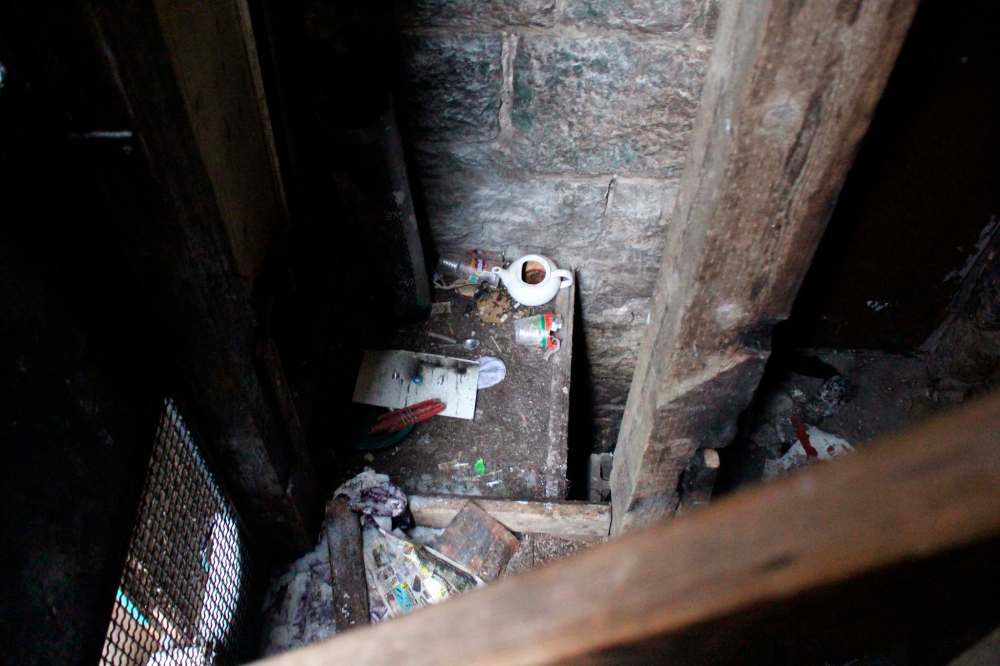
People once called Victoria Court home. Now, it’s one of Winnipeg’s most notorious shooting galleries.
It has been boarded up since September 2018 when bylaw officers issued an order to vacate the building at 471 William Ave. Since then, it has been a constant headache for civic officials.
The Winnipeg Fire Paramedic Service has dealt with five fires there in the past two years. There have been 40 other trips to the building for alarm-system activations, as well as 30 medical emergency calls.

The address is well known among fire-paramedic personnel who monitor it regularly. And, not surprisingly, the site has been subject to frequent complaints. Fire-prevention officials visited the property more than 40 times for inspections last year. In the past two years, bylaw officers responded to 13 complaints that resulted in 10 orders being issued. They also performed 17 on-site inspections.
The building is an eyesore in the heart of Winnipeg’s Centennial neighbourhood, a tight-knit and resilient community, but one plagued by gang activity fuelled by poverty and addiction, intergenerational trauma and broken homes.
In 2019, a historically violent year in the city’s streets, a two-square-block radius in Centennial has seen its fair share of crime, drug abuse and tragedy. And yet, the people who call it home struggle on.
•••

(function() {
var paidAccessCheck = function() {
if ($(“.paidaccess”).css(“display”) == “block”) {
var elements = Array.prototype.slice.call(document.querySelectorAll(“.g-artboard[data-min-width]”)),
widthById = {};
elements.forEach(function(el) {
var parent = el.parentNode,
width = widthById[parent.id] || parent.getBoundingClientRect().width,
minwidth = el.getAttribute(“data-min-width”),
maxwidth = el.getAttribute(“data-max-width”);
widthById[parent.id] = width;
if (+minwidth = width || maxwidth === null)) {
el.style.display = “block”;
} else {
el.style.display = “none”;
}
});
try {
if (window.parent && window.parent.$) {
window.parent.$(“body”).trigger(“resizedcontent”, [window]);
}
if (window.require) {
require([‘foundation/main’], function() {
require([‘shared/interactive/instances/app-communicator’], function(AppCommunicator) {
AppCommunicator.triggerResize();
});
});
}
} catch (e) {
console.log(e);
}
clearInterval(verifyPaidAccess);
}
}
var verifyPaidAccess = setInterval(paidAccessCheck, 500);
// only want one resizer on the page
if (document.documentElement.className.indexOf(“g-resizer-v3-init”) > -1) return;
document.documentElement.className += ” g-resizer-v3-init”;
// require IE9+
if (!(“querySelector” in document)) return;
function resizer() {
var elements = Array.prototype.slice.call(document.querySelectorAll(“.g-artboard[data-min-width]”)),
widthById = {};
elements.forEach(function(el) {
var parent = el.parentNode,
width = widthById[parent.id] || parent.getBoundingClientRect().width,
minwidth = el.getAttribute(“data-min-width”),
maxwidth = el.getAttribute(“data-max-width”);
widthById[parent.id] = width;
if (+minwidth = width || maxwidth === null)) {
el.style.display = “block”;
} else {
el.style.display = “none”;
}
});
try {
if (window.parent && window.parent.$) {
window.parent.$(“body”).trigger(“resizedcontent”, [window]);
}
if (window.require) {
require([‘foundation/main’], function() {
require([‘shared/interactive/instances/app-communicator’], function(AppCommunicator) {
AppCommunicator.triggerResize();
});
});
}
} catch (e) {
console.log(e);
}
}
document.addEventListener(‘DOMContentLoaded’, resizer);
// feel free to replace throttle with _.throttle, if available
window.addEventListener(‘resize’, throttle(resizer, 200));
function throttle(func, wait) {
// from underscore.js
var _now = Date.now || function() {
return new Date().getTime();
},
context, args, result, timeout = null,
previous = 0;
var later = function() {
previous = _now();
timeout = null;
result = func.apply(context, args);
if (!timeout) context = args = null;
};
return function() {
var now = _now(),
remaining = wait – (now – previous);
context = this;
args = arguments;
if (remaining wait) {
if (timeout) {
clearTimeout(timeout);
timeout = null;
}
previous = now;
result = func.apply(context, args);
if (!timeout) context = args = null;
} else if (!timeout && options.trailing !== false) {
timeout = setTimeout(later, remaining);
}
return result;
};
}
})();
#g-centennial-ground-zero-box,
#g-centennial-ground-zero-box .g-artboard {
font-family: ‘Open Sans’, sans-serif;
margin: 0 auto;
}
#g-centennial-ground-zero-box p {
margin: 0;
}
#g-centennial-ground-zero-box .g-aiAbs {
position: absolute;
}
#g-centennial-ground-zero-box .g-aiImg {
position: absolute;
top: 0;
display: block;
width: 100% !important;
}
#g-centennial-ground-zero-box .g-aiSymbol {
position: absolute;
box-sizing: border-box;
}
#g-centennial-ground-zero-box .g-aiPointText p {
white-space: nowrap;
}
#g-centennial-ground-zero-mobile-small {
position: relative;
overflow: hidden;
}
#g-centennial-ground-zero-mobile-small p {
font-weight: 500;
line-height: 9px;
height: auto;
filter: alpha(opacity=100);
-ms-filter: progid: DXImageTransform.Microsoft.Alpha(Opacity=100);
opacity: 1;
letter-spacing: 0em;
font-size: 8px;
text-align: left;
color: rgb(0, 0, 0);
text-transform: none;
padding-bottom: 0;
padding-top: 0;
mix-blend-mode: normal;
font-style: normal;
position: static;
}
#g-centennial-ground-zero-mobile-small .g-pstyle0 {
line-height: 17px;
height: 17px;
font-size: 14px;
}
#g-centennial-ground-zero-mobile-small .g-pstyle1 {
line-height: 17px;
height: 17px;
font-size: 7px;
text-align: center;
color: rgb(153, 153, 153);
}
#g-centennial-ground-zero-mobile-small .g-pstyle2 {
height: 9px;
}
#g-centennial-ground-zero-mobile-small .g-pstyle3 {
line-height: 10px;
height: 10px;
}
#g-centennial-ground-zero-mobile-small .g-pstyle4 {
line-height: 8px;
height: 8px;
font-size: 6px;
}
#g-centennial-ground-zero-mobile-large {
position: relative;
overflow: hidden;
}
#g-centennial-ground-zero-mobile-large p {
font-weight: 500;
line-height: 11px;
height: auto;
filter: alpha(opacity=100);
-ms-filter: progid: DXImageTransform.Microsoft.Alpha(Opacity=100);
opacity: 1;
letter-spacing: 0em;
font-size: 9px;
text-align: left;
color: rgb(0, 0, 0);
text-transform: none;
padding-bottom: 0;
padding-top: 0;
mix-blend-mode: normal;
font-style: normal;
position: static;
}
#g-centennial-ground-zero-mobile-large .g-pstyle0 {
line-height: 19px;
height: 19px;
font-size: 16px;
}
#g-centennial-ground-zero-mobile-large .g-pstyle1 {
line-height: 19px;
height: 19px;
font-size: 8px;
text-align: center;
color: rgb(153, 153, 153);
}
#g-centennial-ground-zero-mobile-large .g-pstyle2 {
height: 11px;
}
#g-centennial-ground-zero-mobile-large .g-pstyle3 {
line-height: 8px;
height: 8px;
font-size: 7px;
}
#g-centennial-ground-zero-desktop {
position: relative;
overflow: hidden;
}
#g-centennial-ground-zero-desktop p {
font-weight: 500;
line-height: 12px;
height: auto;
filter: alpha(opacity=100);
-ms-filter: progid: DXImageTransform.Microsoft.Alpha(Opacity=100);
opacity: 1;
letter-spacing: 0em;
font-size: 10px;
text-align: left;
color: rgb(0, 0, 0);
text-transform: none;
padding-bottom: 0;
padding-top: 0;
mix-blend-mode: normal;
font-style: normal;
position: static;
}
#g-centennial-ground-zero-desktop .g-pstyle0 {
line-height: 22px;
height: 22px;
font-size: 18px;
}
#g-centennial-ground-zero-desktop .g-pstyle1 {
line-height: 22px;
height: 22px;
font-size: 9px;
text-align: center;
color: rgb(153, 153, 153);
}
#g-centennial-ground-zero-desktop .g-pstyle2 {
height: 12px;
}
#g-centennial-ground-zero-desktop .g-pstyle3 {
line-height: 19px;
height: 19px;
font-size: 8px;
text-align: center;
color: rgb(153, 153, 153);
}
#g-centennial-ground-zero-desktop .g-pstyle4 {
line-height: 10px;
height: 10px;
font-size: 8px;
}
/* Custom CSS */
.gi.ai2html {
margin-bottom: 1em;
}
.gi.ai2html p {
text-shadow: 1px 1px 0px rgba(255, 255, 255, 0.7), -1px -1px 0px rgba(255, 255, 255, 0.7), -1px 1px 0px rgba(255, 255, 255, 0.7), 1px -1px 0px rgba(255, 255, 255, 0.7);
}
.gi.ai2html #no-shadow p {
text-shadow: none !important;
}
@media screen and (max-width: 375px) {
#gi-1205-498-centennial-crime-mobile-small,
#gi-1205-498-centennial-crime-mobile-large,
#gi-1205-498-centennial-crime-desktop {
display: none;
}
#gi-1205-498-centennial-crime-mobile-small {
display: block;
}
}
@media screen and (min-width: 375px) and (max-width: 569px) {
#gi-1205-498-centennial-crime-mobile-small,
#gi-1205-498-centennial-crime-mobile-large,
#gi-1205-498-centennial-crime-desktop {
display: none;
}
#gi-1205-498-centennial-crime-mobile-large {
display: block;
}
}
@media screen and (min-width: 570px) {
#gi-1205-498-centennial-crime-mobile-small,
#gi-1205-498-centennial-crime-mobile-large,
#gi-1205-498-centennial-crime-desktop {
display: none;
}
#gi-1205-498-centennial-crime-desktop {
display: block;
}
}

The Centennial neighbourhood in focus
Ross Ave.
Gang graffiti throughout
this alley
Elgin Ave.
‘Needle Alley’
Double-homicide
in the back lane of
400 block of Elgin
7-Eleven that closed
in November 2019
400 block of Elgin where
a homicide occurred
William Ave.
Gertie St.
Isabel St.
Boarded-up apartment building
that is used as a ‘shooting gallery’
by intravenous drug users
Detail
Winnipeg Free Press
Map data © 2019 Google

The Centennial neighbourhood in focus
Ross Ave.
Gang graffiti throughout
this alley
Elgin Ave.
‘Needle Alley’
Double-homicide
in the back lane of
400 block of Elgin
7-Eleven that closed
in November 2019
William Ave.
400 block of Elgin where
a homicide occurred
Gertie St.
Isabel St.
Boarded-up apartment building
that is used as a ‘shooting gallery’
by intravenous drug users
Detail
Winnipeg Free Press
Map data © 2019 Google

The Centennial neighbourhood in focus
Ross Ave.
Double-homicide
in the back lane of
400 block of Elgin
Gang graffiti throughout
this alley
Elgin Ave.
‘Needle Alley’
400 block of Elgin where
a homicide occurred
William Ave.
Gertie St.
Isabel St.
7-Eleven that closed
in November 2019
Boarded-up apartment building
that is used as a ‘shooting gallery’
by intravenous drug users
Detail
Ellen St.
Winnipeg Free Press
Map data © 2019 Google
“We call this place Needle Alley,” says Louis Hendrickson, rummaging through the debris behind Victoria Court with a trash picker in hand.
“It starts from here and it goes all the way down towards (Health Sciences Centre). It’s one of the worst spots we’ve found for needles.”
On this day, Hendrickson is at the property with his nephew Brandon Beaton, two members of a new organization called Sharp Surgeons that’s dedicated to cleaning up Winnipeg’s streets.
Up to four times per week, for multiple hours each day, Hendrickson and Beaton — alongside Louis’s brother Eddie — are picking up discarded syringes at various hot spots in the city.
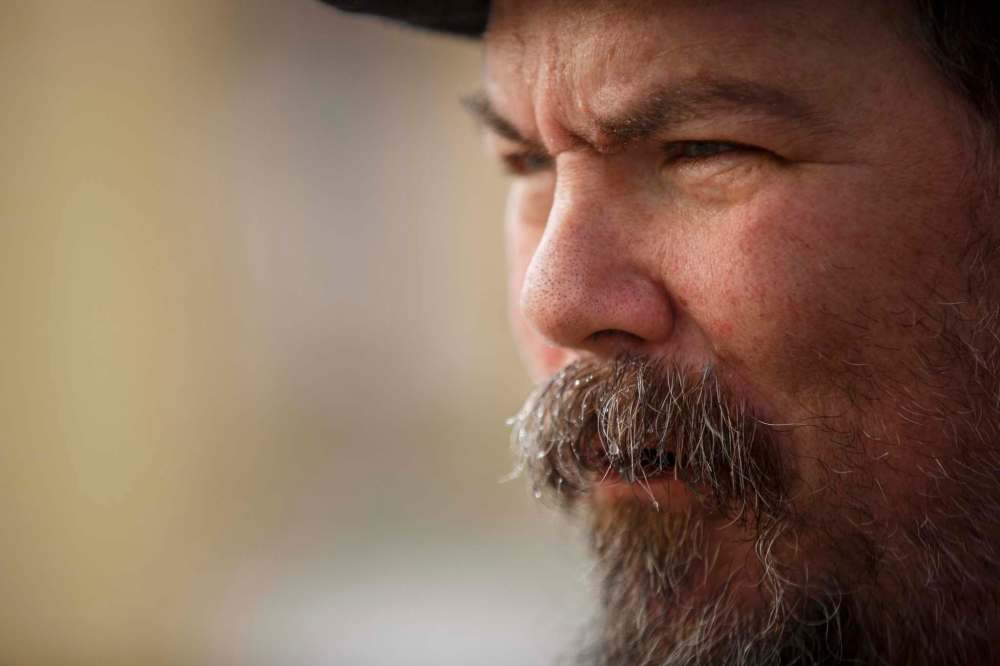
Each time they go out, Hendrickson says, they find anywhere from 150 to 500 syringes on the ground.
“This property here, one time when we were working with another guy from a different group, we pulled 600-700 needles out of here,” Hendrickson says, motioning towards the apartment building.
“People have addiction problems around here. There’s crime and what we do is we just try to make a difference. We pick up the needles.”
The back alley behind Victoria Court has developed an infamous reputation. It’s one of many locations the Sharp Surgeons return to on a regular basis. And each time they come back, there are more needles to pick up.

For Hendrickson and Beaton, the reality of addiction hits close to home — and it’s not because of the work they’re doing. Both men freely admit to having struggles with substance abuse.
Although he’s been clean for more than 22 years, Hendrickson says he drank heavily when he was younger, and that, at times led him to illicit drug use. Thankfully, he says, he never got into needles.
For Beaton, however, the high point of his addiction looms larger in the rear-view mirror.
“I used to be a suffering addict myself. I used to be addicted to meth and I know how it is out there. When I see these needles and the addicts that are still out here suffering, I feel for them,” says Beaton, who has a year of sobriety under his belt.
“It was a tough battle. There’s plenty of other things that I could be doing three to four days a week, but I find when my uncles call me and tell me we’re going to go needle-picking, I often find that it helps me in my path of recovery.”
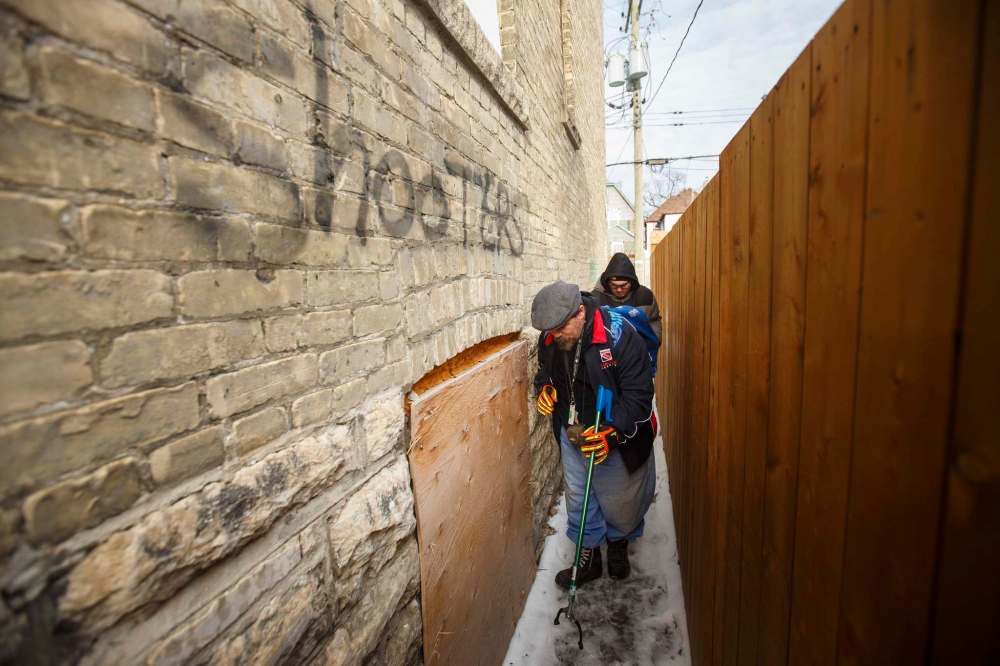
The wind seemingly grows colder as the two men circle the building, wearing puncture-proof gloves and holding trash pickers with mechanical claws. They sift through the garbage scattered around the property in search of needles.
Each time they find one, they use their tools to safely pick it up and deposit it into a plastic disposal container. By volunteering their time on the front lines of the city’s meth crisis, they hope to make Winnipeg a safer place — one needle at a time.
“This crisis that’s happening right now, it really takes a toll on me. I have a heavy heart, because I was an addict. Once my friend got me the meth, I fell in love with it. I really did fall in love with it. The withdrawals were just insane. That was me on the daily, trying to find my next fix,” Beaton says.
“I just wish the governments would work on putting more mental-health places into action, places where suffering addicts can come and go.”
Hendrickson murmurs in agreement and nods his head.
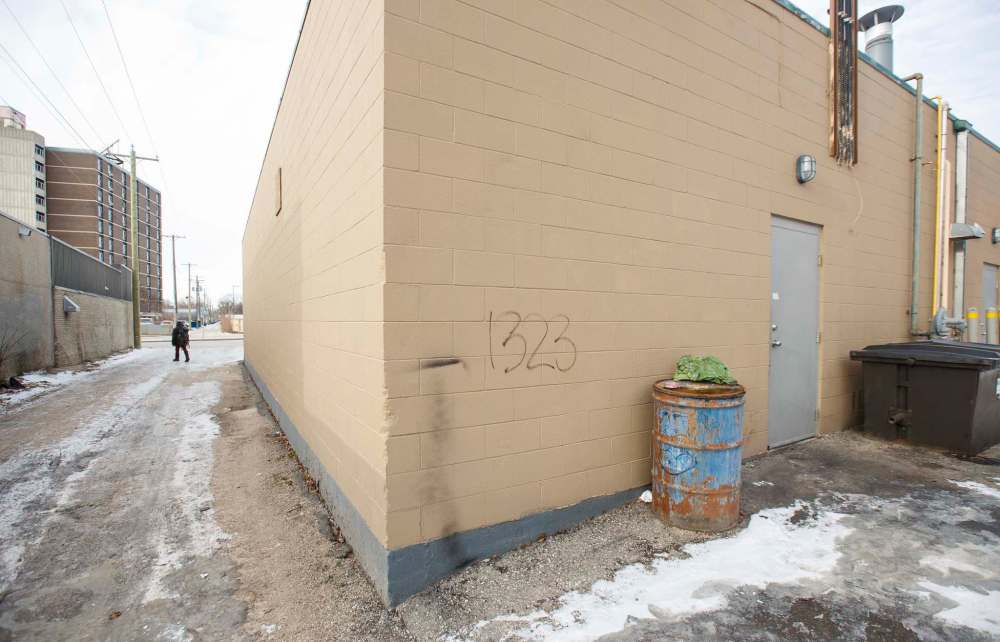
“The three governments got to work together,” he says. “There’s one politician, and I won’t say names, and she said, ‘Oh, what crisis?’ To me, that’s nonsense and you shouldn’t be talking like that. If you’re working for the people, why are you saying there’s not a crisis when there is? There’s a meth crisis.”
As the two of them wrap up their work at Victoria Court, they stop to plot their next move, eventually deciding to continue west down Needle Alley towards HSC, before calling it a day.
“You know, we don’t judge people. We don’t ask their names. If they see us picking up needles and they want to give us needles, we just say, ‘Hey, no problem, thanks.’ We’ve gone to meth camps by the river and they just give us their needles. They say, ‘Come on in guys, just respect our little area,’” Hendrickson says.
“We’ll go to abandoned houses, warehouses. We’re on call, too. If someone calls and says, ‘Hey, go to such and such address.’ It’s just, ‘Let’s go.’”
And with that, the two men head down the street, walking at a slow pace as they pass the 7-Eleven at 500 William, a stone’s throw from Victoria Court.
•••
For many area residents, the 7-Eleven at the intersection of William Avenue and Isabel Street was an important, and convenient, stop. It was a place to grab a morning coffee or a quick lunch, to buy bread, eggs and milk, cigarettes, bus passes, Slurpees and snacks.
But the business is no more. Now, it resembles the nearby Victoria Court: the front doors are locked, the windows are boarded up and the iconic red, green and orange corporate colours have been stripped away, replaced by plywood.
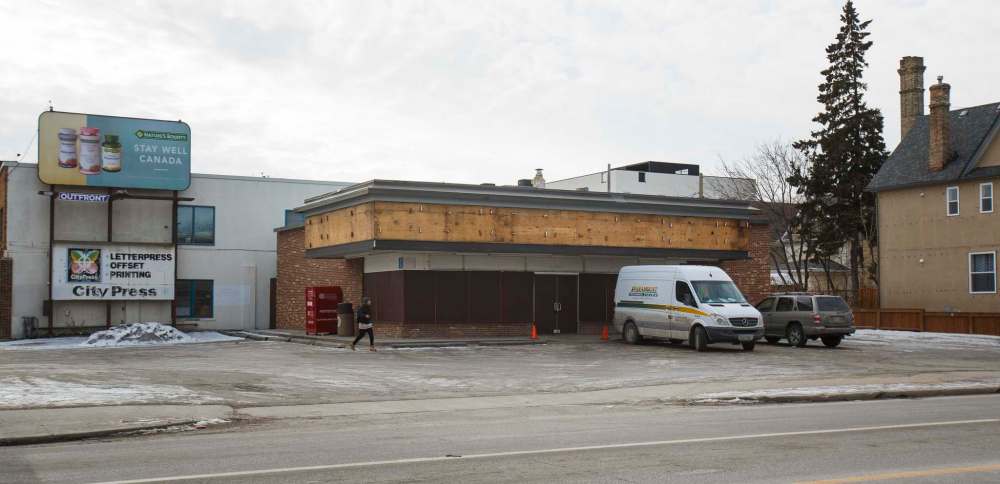
While the company’s Canadian office has been mum on the reason behind the closure, it’s common knowledge among area residents: rampant theft.
During a year when multiple, daily Liquor Mart thefts and robberies have dominated media headlines, the extent to which other retailers are also facing spikes in shoplifting has often been overlooked. And it isn’t just liquor thefts that turn violent.
Written on the north exterior wall of Victoria Court is a message to those who squat inside. Sketched on a board in permanent marker, it warns they’ve stolen from the 7-Eleven one too many times.
Walking around the apartment complex, it’s hard not to notice that much of the garbage dropped and discarded on the ground are items that can be purchased at convenience stores.
“It’s definitely gotten worse here.”– Dan, a longtime area resident
“It’s definitely gotten worse here,” says Dan, a longtime area resident who declined to give his last name.
“The 7-Eleven just closed. I would go there quite often. In the past few months, I’ve actually seen two or three people come in and try to take stuff. And one time, a few weeks ago, someone came in and the cashier said, ‘Oh, that’s the guy that assaulted me.’”
Many other area residents have similar stories, saying it was well known in the community that shoplifting at the store was out of control. In the leadup to its closure, some employees reportedly told customers they were shutting down because of daily thefts of products totalling thousands of dollars.
For Dan, the shuttered store is just one example of the myriad issues plaguing the neighbourhood. It’s become so bad he’s begun asking his mother, who is in her 60s, to take a longer route home from work at night because he doesn’t like her walking alone on certain streets.
And despite calling the neighbourhood home for more than a decade, he says it’s deteriorated to the point he has no choice but to move.
“There’s just something changing. I don’t know what it is. It feels unsafe,” he says.

He isn’t alone in his concerns. Gasle Jama, a Somali refugee who came to Canada a year ago, says he’s been jumped and beaten three times since moving to Winnipeg.
“Six months ago, I was getting jumped everywhere. Every time I get out of my house, I was getting abused. ‘You f–king black. You f–king African. Go back to your country.’ Three times I was jumped,” Jama says.
“They just beat me up regularly. They jumped me to the ground, punched me, beat me. But those three times I was so lucky. I didn’t get stabbed. I didn’t get brain injury. It could have been worse.”
In addition to the violence he’s been subjected to — which includes a fourth incident near Siloam Mission, where he was stabbed in the arm — Jama says he’s routinely asked if he wants to purchase drugs while walking through the area.
When asked how often this happens, he shouts: “Every day, man!”
“You know the three monkeys? See no evil, hear no evil, speak no evil. Around here, that’s what you do.”– Perry
Although Centennial is a relatively small neighbourhood — bordered by Princess and Sherbrook streets from east to west, and Logan and William avenues from north to south — the community has long suffered from elevated crime rates.
Winnipeg Police Service data from August 2018 to August 2019 shows Centennial experiences disproportionate levels of arson, weapons offences, breaking-and-entering, mischief and court breaches.
The WPS declined an interview request for this story.
While crime in the community is nothing new, for Perry — who did not want his last name published — Centennial isn’t the same neighborhood he grew up in decades earlier. While he’s since moved, he says he comes back often, either to visit family or for medical appointments.
Standing on the sidewalk across from the closed 7-Eleven, with a cigarette between his fingers and smoke trailing into the air, Perry shakes his head and reflects on how the neighbourhood has changed. Then, he launches into a rant about the way children look up to gang members.
“You know the three monkeys? See no evil, hear no evil, speak no evil. Around here, that’s what you do,” he says.
“You don’t talk about what you see. You just walk away.”
•••
On the morning of Oct. 27, blood was spilled in the back lane of the 400 block of Elgin Avenue, near Victoria Court. The two locations are separated only by Needle Alley and two rows of houses.
An area resident says they heard “six to seven” gunshots pierce the night at about 2 a.m. Soon after, the sound of sirens filled the air as police descended on the scene.
The shooting was a double homicide. Police later identified the victims as Edwin Adrian Harper, 32, and Wayne Patrick Palidwor, 62. Their deaths marked the city’s 35th and 36th killings of 2019.

The current homicide total sits at 41, which ties the highest number on record for a single calendar year. The slayings of Harper and Palidwor are not the only violent deaths to hit Centennial in recent months.
Two months earlier, on Aug. 24, police were again called to the 400 block of Elgin Avenue in the overnight hours. They found John Graham Buesnel, 64, dead in his home — homicide victim No. 28.
On Aug. 29, detectives arrested Taylor Lapierre, 24, and charged her with manslaughter. Two days later, Lapierre’s sister, Shyla Lee Walker, 31, turned herself into police. She was charged with second-degree murder in the slaying.
No arrests have been made in the Oct. 27 double homicide. Both victims were known to police: Palidwor was convicted of assault with a weapon in January; Harper had been convicted of assault charges three times in the past eight years.
While the events leading up to their deaths remain unclear, the back lane where they were found bleeding out from gunshot wounds is littered with gang graffiti.
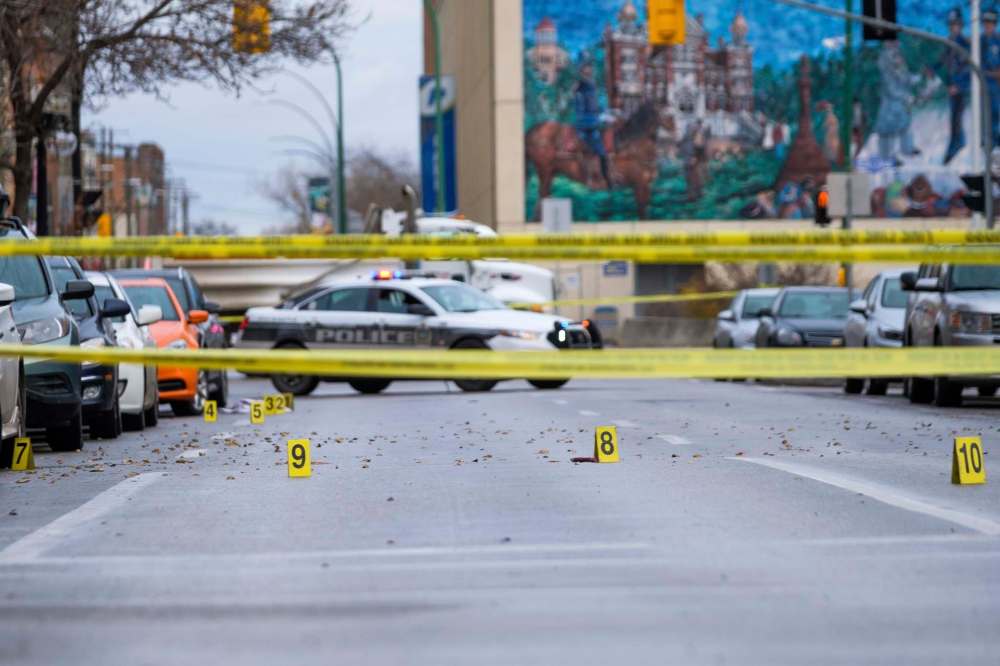
From the edge of Isabel Street down the back lane to Ellen Street, tag after tag is scrawled on houses, businesses and apartment blocks, fences, garage doors and utility poles. Most of the tags reference rival street gangs.
On the back wall of the Kyu Bistro restaurant at 185 Isabel St., located at the mouth of the alley, “1323” has been spray-painted. The tag is a reference to the Manitoba Warriors street gang: the 13 stands for M, the 13th letter of the alphabet; the 23 for W.
Other tags reference the B-Side gang, the African Mafia and the Mad Cowz, among others. Often, they explicitly invoke violence.
One tag near the site of the double homicide reads “BSK,” which stands for “B-Side killers.” Gangs will often leave such claims in order to send a message: we kill members of your gang.
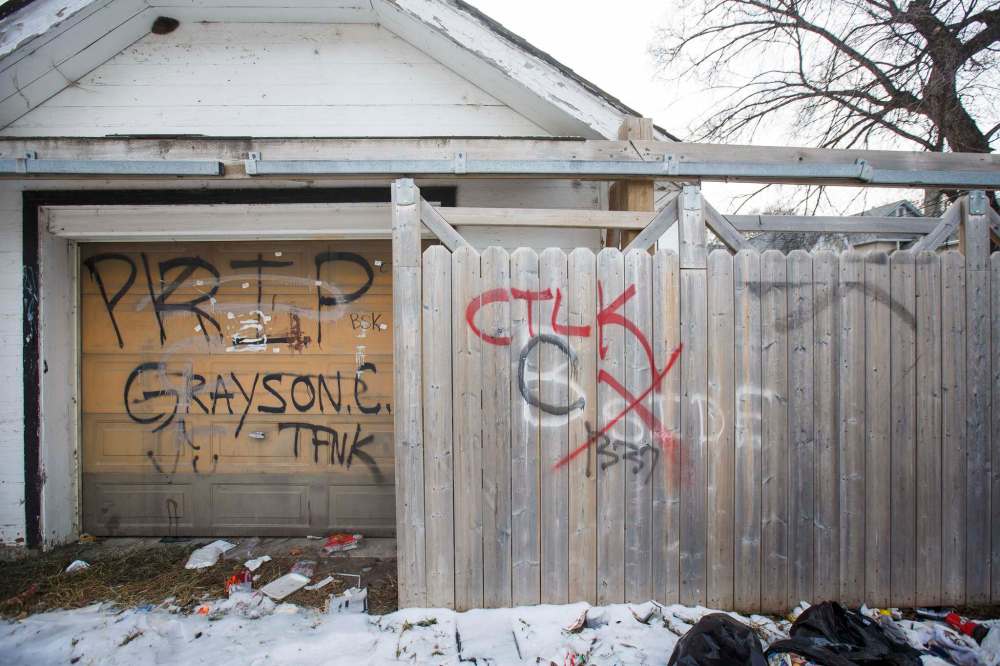
A source with knowledge of the city’s gang scene says the Central area, which includes Centennial, is a “Mad Cowz stronghold.” However, the source says two other street gangs — TFN (Tax Free N——) and MMM (Money Making Mali’s) — also have a presence there.
Recent shootings in Winnipeg, including last month’s deadly shooting at Citizen Nightclub in the Exchange District, are believed to be gang-related. In part, the source pointed to an apparent feud between the African Mafia and TFN as a source of bloodshed.
The Free Press spoke to a man who grew up in Centennial and was involved with several street gangs for more than a decade. He requested anonymity, since he might be seen as “a rat” for speaking to the press.
He says on his walk to school every day as a child he would pass by two different gang strongholds. By the age of 12, he was involved in gang activity and was locked up in the Manitoba Youth Centre for the first time.
“Around 12 I was stealing cars, things like that. The first time I smoked weed I was probably about 11 or 12. I think the first time that I drank I was eight. You grow up fast. You grow up hard. The innocent part of you is already kind of gone — let’s put it that way,” he says.
“Every kid looks up to the older guys, the older kids. They have money and things like that. You want that. You want the nice flashy things. You want to have money, so you do whatever it takes to get that money.”

When asked what drives young men and women into street gangs in Winnipeg’s inner-city, he points to poverty, addiction, intergenerational trauma, broken families and social isolation.
He says it’s no surprise Winnipeg’s street gangs are primarily populated with Indigenous peoples and new Canadians, many of whom have fled unstable lives in unsafe countries. Both groups, he says, are often marginalized and impoverished.
“You want to be a part of a family. You want to be a part of something bigger than yourself. Gangs are like any society. It has its own politics, its own laws, its own rules, its own structure. You want to have a sense of belonging and you don’t want to be poor,” he says.
“For me, it wasn’t until I got my head above water financially that I was able to get out. I was able to go back to school and get myself a good job. But it’s just so hard to leave, because the money lures people and there’s always the threat of the fact you can get hurt leaving gangs.”
He says the tags throughout Centennial showcase how gangs mark their territory. One gang will put up a tag to establish their area of control, then another gang will come along to tag the same spot as a sign of disrespect.

The people putting up graffiti are often “younger kids,” he says, but that doesn’t make it any less serious. “People lose their lives for it.”
While he hasn’t been involved with gang life for some time, when he was active in the 1990s, he says there was a war between gangs located in Central Winnipeg and the North End.
“People were getting stabbed, shot. Some people who were innocent were caught between all that. If you were from the North End, you wouldn’t go to Central, and if you were from Central, you wouldn’t go to the North End, because you knew you were running a risk,” he says.
When he reflects upon changes in the gang culture since then, he says some things have improved, but others have worsened. His main concern now is drugs, chief among them meth.
He says Winnipeg will continue to have a street-gang problem until it addresses the underlying conditions that lead people into the lifestyle in the first place.
“Poverty is a killer. So is addiction. They’re both killers. It always stems back to the same things. It always goes back to poverty. If you don’t have an education, you’re going to fall back on whatever makes you money,” he says.
“You’re in survivor mode. You’re going to do whatever you have to do in order to survive.”
•••
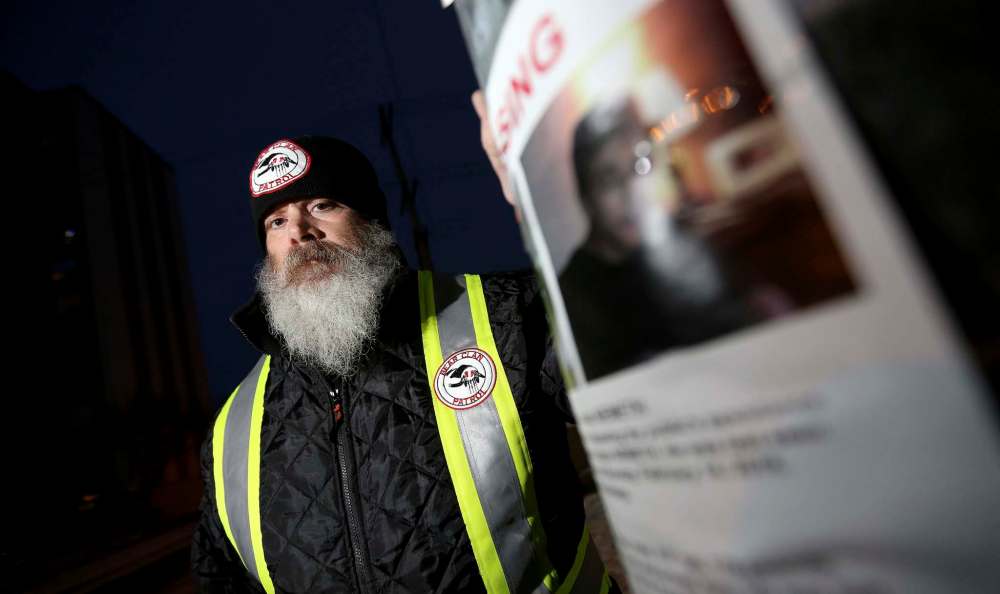
For Mitch Bourbonniere, a local organizer with Ogijiita Pimatiswin Kinamatawin, a social service agency that works with at-risk Indigenous youth and adults, it’s important to highlight the positive work being done in communities such as Centennial, not just the struggles.
“There are people offering mentorship, life coaching, support, employability programs, healing programs, cultural programs, that are trying to create a sense of belonging and a sense of purpose,” he says.
“There are alternatives out there. There is hope. There are programs that are offering help.”
He points to the work being done by Rossbrook House as an example of an agency that’s active in Centennial and is making a positive, tangible impact on the lives of area residents.
Founded in 1976, Rossbrook House is a neighbourhood drop-in centre at the corner of Ross Avenue and Sherbrook Street. It offers a safe space for children and young adults.
In order to counteract the negative influences that abound on the streets of inner-city Winnipeg, the agency keeps its doors open 365 days a year. Many of the children and young adults who turn up at the centre are later recruited to become staff members.
An average of 80 people show up every day and more than 1,000 seek out the centre’s services each year. In addition to offering a safe space, it also provides alternative school programs, support groups and free meals.
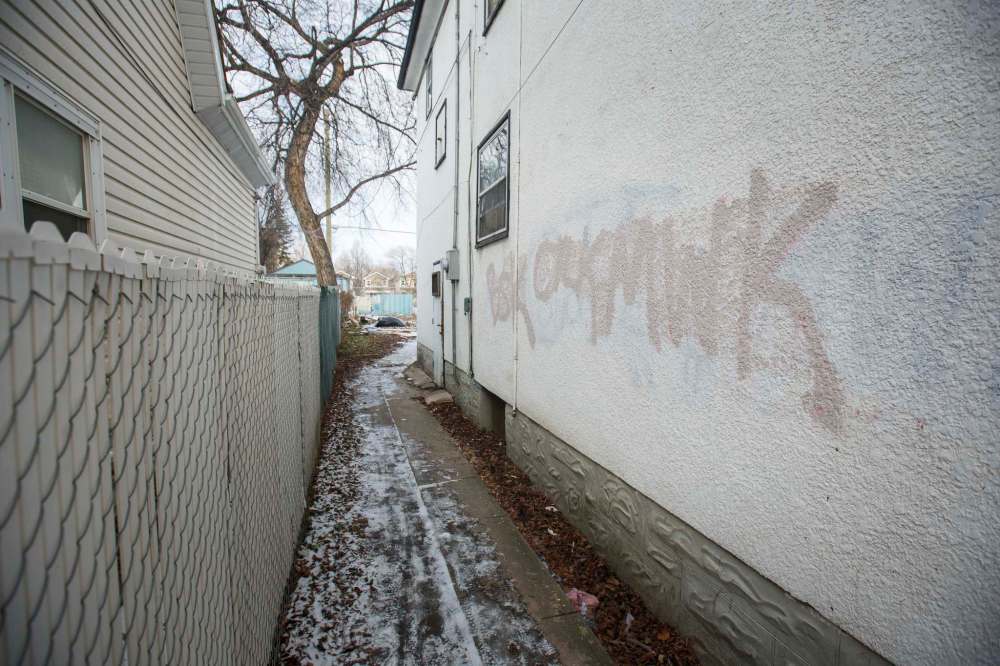
Rossbrook House executive director Phil Chiappetta says elevated crime in the community is driven by poverty levels that are more profound than other areas of Winnipeg.
“There are a lot of people who have experienced a lot of suffering and hardship in life. But even with all the crime that’s happened lately, and has happened throughout the years at different times, it’s still a very wonderful, vibrant community,” Chiappetta says.
“We try to provide a real grounding for people, so they can find a place where they’re comfortable. We want to build a strong sense of belonging and provide very accessible role models for young people. We try to open up opportunities, to give people the courage to go on in school, to get employment.”
Rossbrook House isn’t alone in its work to make the neighbourhood a safer and better place to live.
Non-profits such as the Immigrant and Refugee Community Organization of Manitoba, located at 215 Isabel St., does important work to help settle new Canadians. Religious groups, including the Amazing Grace Ministry and the Living Gospel Church, serve as important social hubs.
And while Centennial may have lost its 7-Eleven due to incessant theft, on Oct. 2, Dino’s Grocery Mart opened its new location at 84 Isabel St., filling a desperate need in an area that has long been a food desert.
In addition to the imported products Dino’s specializes in — Caribbean, Central and South American, African, East Indian and Middle Eastern, it also has a selection of fresh fruits and vegetables and some standard items featured at most grocery stores.
Meanwhile, the Gang Action Interagency Network — which has an office on Isabel Street not far from the Oct. 27 double homicide site — does important work helping gang members out of a criminal lifestyle.
The organization is a collection of government and non-profit agencies, community groups and law enforcement officials who work together on grassroots solutions to the gang problem. Not only does it seek to help members leave the life behind, but it also works to prevent youth from getting involved with gangs in the first place.
“Everybody has a dream when they’re a kid. It’s up to us as a community to make sure those dreams can be fulfilled, that they can come to fruition for that child. Even gang members didn’t grow up dreaming of being in gangs. The problem is, as kids grow up their dreams start to slip away.”
The former gang member who spoke to the Free Press says the important thing for people to realize is the ways in which all of these issues — gangs, crime, addiction, poverty, racism and social isolation — intersect and feed off one another.
He believes every Winnipegger has a role to play in finding solutions and fostering healthy communities.
And until that happens, the social agencies and non-profit organizations active in Centennial will continue to battle the street gangs and drug havens for the community’s soul.
“You take a young kid and they never say, ‘When I grow up, I want to be in a gang.’ They say, ‘I want to be a fireman. I want to be a policeman. I want to be an astronaut.’ They don’t want to be in gangs, but you fall back on what’s available, on whatever makes you money,” he says.
“Everybody has a dream when they’re a kid. It’s up to us as a community to make sure those dreams can be fulfilled, that they can come to fruition for that child. Even gang members didn’t grow up dreaming of being in gangs. The problem is, as kids grow up their dreams start to slip away.”
ryan.thorpe@freepress.mb.ca
Twitter: @rk_thorpe

Ryan Thorpe likes the pace of daily news, the feeling of a broadsheet in his hands and the stress of never-ending deadlines hanging over his head.
Our newsroom depends on a growing audience of readers to power our journalism. If you are not a paid reader, please consider becoming a subscriber.
Our newsroom depends on its audience of readers to power our journalism. Thank you for your support.
History
Updated on Saturday, December 7, 2019 2:25 PM CST: Fixes typo.
Updated on Saturday, December 7, 2019 3:54 PM CST: Updates photo caption



